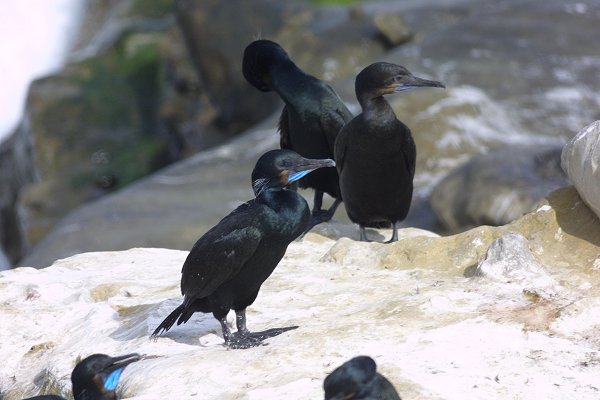
Location: La Jolla, CA
Date: 2003-03-23
Lens: Canon 400mm F5.6

 Brandt's Cormorant
Phalacrocorax penicillatus
Brandt's Cormorant
Phalacrocorax penicillatus
 Description
DescriptionThis bird often travels in flocks that fly in an irregular line just above the water. They primarily feed on fish, which they catch underwater by rapidly swimming and using their hooked bill. The Brandt's is the most abundant cormorant in California. The name Cormorant is derived from the Latin words Corvus Marinus, meaning marine crow or raven. This may be a result of their dark appearance and the way they perch on cliffs.
General: Entirely glossy black plumage. Black legs and feet. Long, black, narrow, hooked bill. Fairly long tail. Blue eye. Sexes similar. 28 to 33 inches in length.
Breeding: Blue throat pouch (Gular) with yellowish border. Thin white plumes on neck and back.
Immature: Dark brown upperparts and paler underparts. Flies with neck extended.
Coastal cliffs, offshore rocks and waters.
 Nesting
Nesting3-6 chalky bluish eggs. They have a ? day incubation period. Fledging occurs ? days after hatching. The nest is large and made from seaweed or other debris. Nests in colonies on cliffs and rocky islands.